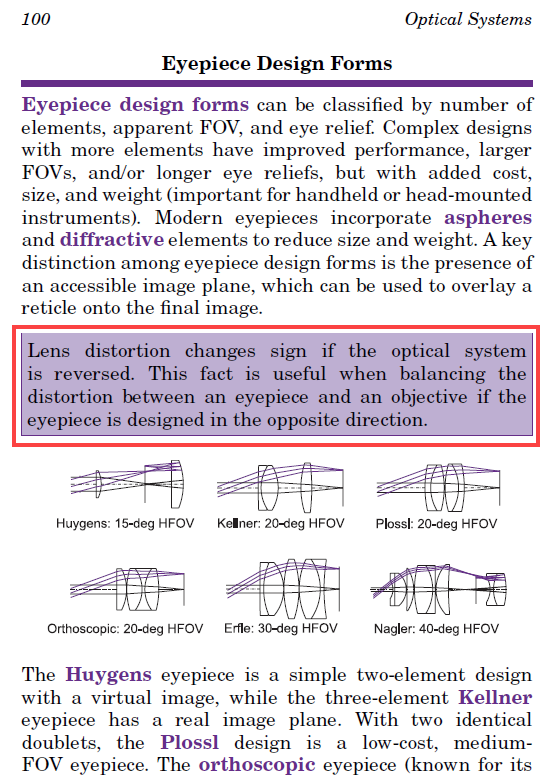Hello!
Me and my professor are re-simulating a catadioptric capsule endoscope imaging system design created by Mr. Roy Wang and Prof. Qiyin Fang. The design has a separate file for forward and side view raytracing. The forward view looks as following:
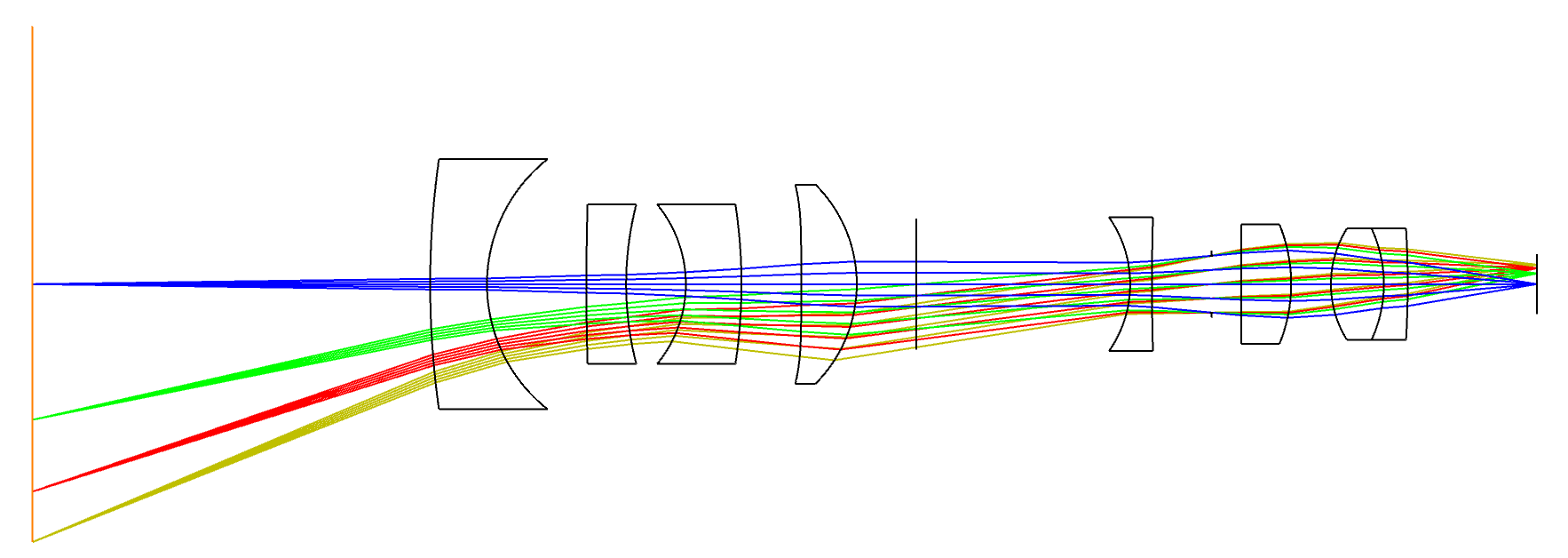
And the side view as following:
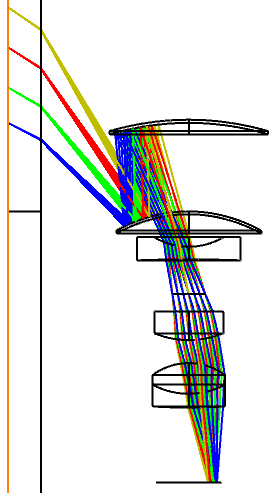
The last four lenses are are shared with the forward and side views. My question is about the ray aiming option provided in Zemax. The figures above are obtained with the “Real” ray aiming option and “Float by Stop Size” aperture option. If the ray aiming is turned off, the simulation for the radial view does not even converge:
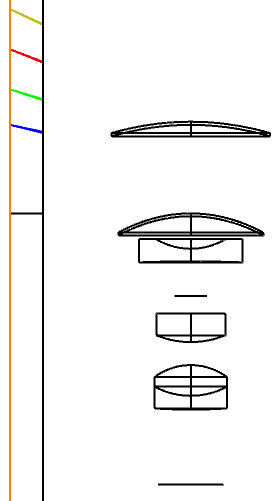
For the forward view, the simulation without ray aiming does converge, but the results (spot sizes, MTF) differ significantly from those obtained by Mr. Wang and Prof. Fang. Based on the documentation, I did not thoroughly understood the pupil aberration and circumstanses when the ray aiming option should be used. If it will always produce more accurate results, why not use the ray aiming option all the time? How can one determine when the ray aiming is actually needed and how to choose between paraxial and real ray aiming? These questions are partially addressed in the documentation, but as an inexperienced optics designer, I would be grateful for a clarification.
The second question is a more theoretical than a practical one. We are using this existing design as a basis for our own capsule endoscopy imaging system design and thus trying to figure out the purposes of different lenses and mirrors. The three last lenses, (plano-convex and the doublet) form a structure called Kellner eyepiece. According to my understanding, eyepieces are typically used as the final element in systems such as microscopes or telescopes for producing a distant virtual image that can be viewed with a relaxed eye. So my question is, why would one use an eyepiece here to produce a real image on an imaging sensor? The raytrace diagram of the eyepiece part is shown below (ray aiming turned on):
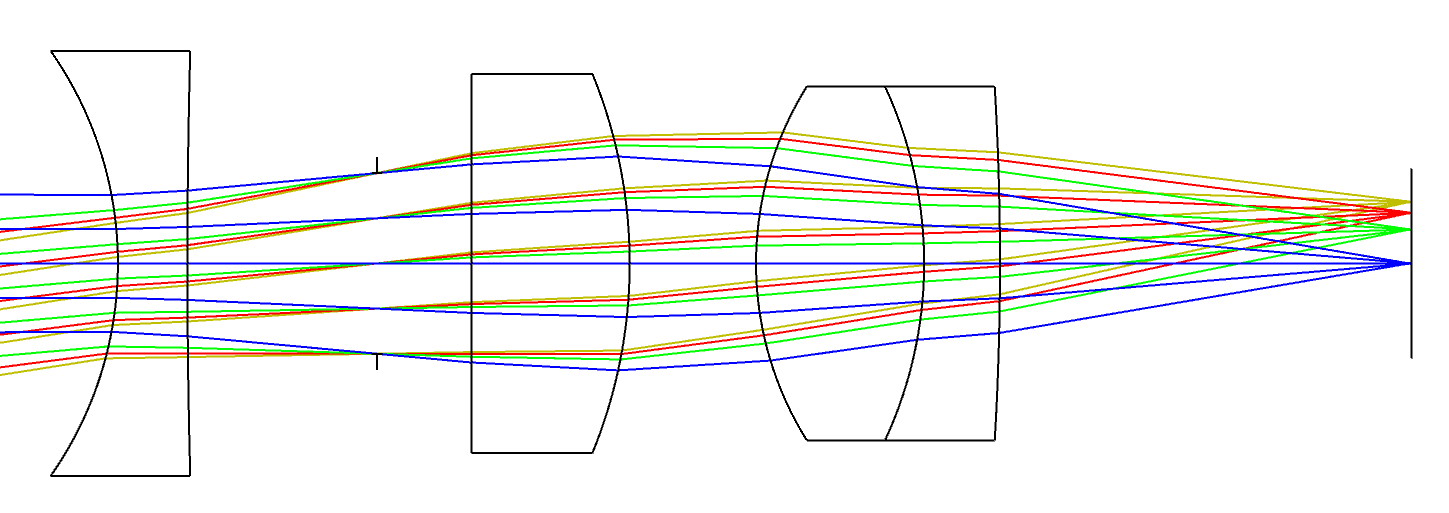
Best,
Pyry Kiviharju





